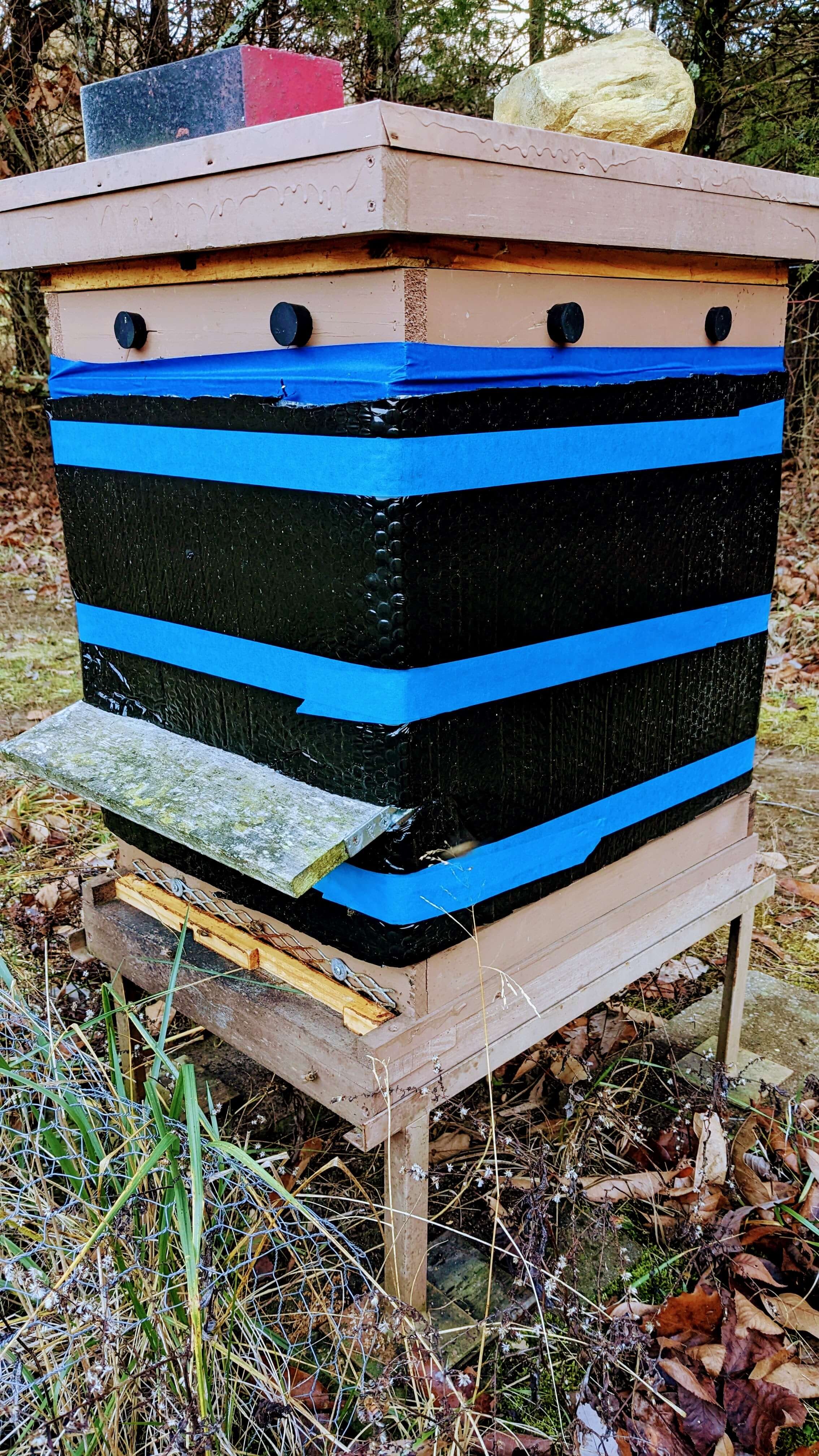My experimental setup using bubble wrap insulation around the core section of my hives
I have never wrapped my hives. I do carefully winterize them, to be sure, but this has never included insulation on the outside of the hive bodies. My overwintering success rate through 2023 is 93.98%, so the argument in favor of insulation has never held much water to me. Instead, I’ve espoused the common understanding that the honey bee cluster acts as its own insulation, with the bees on the outside of the cluster keeping heat in the inside of the cluster. But this new study out of the University of Leeds has me second guessing my winter setup.
The UK study is calling for “further debate on the ethical treatment of insects,” based on findings that the outer mantle of the cluster actually acts as a heat sink—pulling warmth out of the cluster and dissipating it into the surrounding air. The study posits that clustering “is not a ‘wrapping of a thick blanket’ to keep warm, but more like a desperate struggle to crowd closer to the ‘fire’ or otherwise die and fail the colony.” This juxtaposes my long-held belief that clustering bees were simply exhibiting “normal” winter behavior in reaction to “normal” winter conditions. The difference is subtle (and still needs to be explored further), but the implication is that, by keeping my bees in standard Langstroth hive during very cold temps, I could be causing them great stress or suffering.
A roll of double-sided foil bubble wrap insulation
So while there’s a lot still up in the air, my personal mandate to be an ethically focused beekeeper has shifted my take on hive winterization. At a fairly minimal cost of about $5 per hive, I used double-sided bubble insulation to wrap my colonies this winter (this is in addition to the foam insulation I’ve always put above the inner cover). Basically I bought a roll of the bubble insulation, cut pieces to fit over the core of my single deep-single medium winter hives, put the black side out to help absorb heat from the sun, and secured it around my hives with painter’s tape. The bubble wrap will only add about an R-value of 1, but that doubles the R-value of the walls on a standard Langstroth box! In addition to doubling the insulation of my hives for $5 each, I expect the bubble wrap will be reusable for several winters, and shouldn’t take up much space when rolled up for summer storage.
Insulation cut into strips to cover my single deep, single medium hive boxes.
For $5 per hive, I’m considering this a cheap experiment, and perhaps some insurance to help stave off undue suffering for my bees. If continued research shows the Leeds study was flawed, or if my winter success rates fall, then I’ll reconsider the effort required to add insulation each winter. Beyond all the practical reasons this may or may not be a good idea, I’m selfishly proud that I’m still adjusting my techniques after many years of keeping bees. It’s easy to lean on old habits and repeat them year after year, but we should all be willing to explore new paths in response to personal lessons, or lessons shared by the scientific and academic communities.


